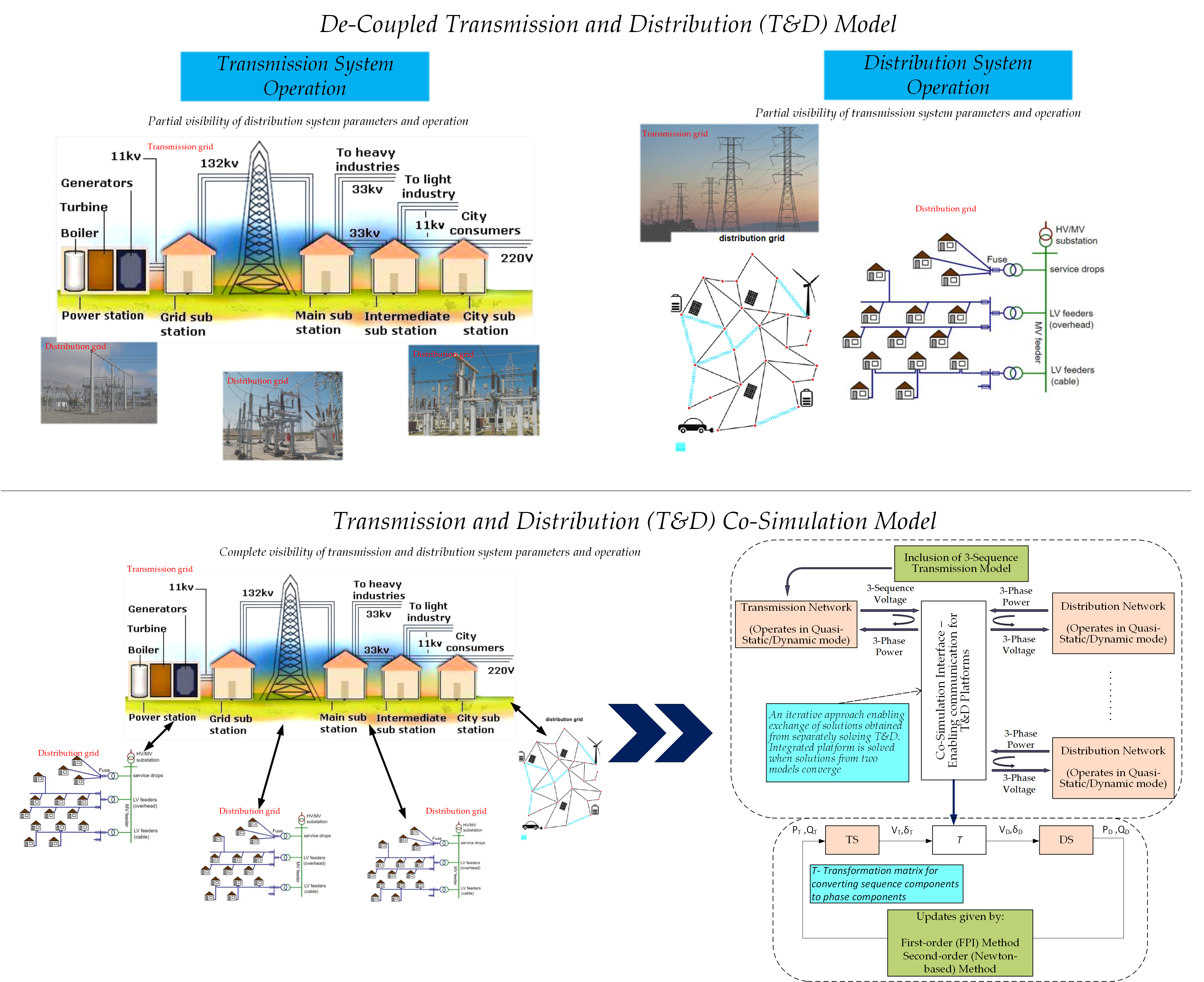
Transmission and Distribution Co-Simulation with High Distributed Energy Resources (DERs)
In this project, three co-simulation models are developed to evaluate the impacts of DERs on the integrated T&D systems. These are quasi-static co-simulation (suitable for voltage regulation and power flow studies), hybrid co-simulation (to simulate frequency regulation concerns and AGC response from DERs), and dynamic co-simulation (to model system response during transients and faults).
Quasi-static co-simulation model: Here, an iteratively coupled quasi-static T&D co-simulation framework where both the transmission and distribution systems are simulated in quasi-static mode. This part is the major emphasis of this project, and the work is jointly conducted by Washington State University and Colorado School of Mines.
Hybrid co-simulation model: Here, a hybrid co-simulation framework is developed to study DER variability and its effects on the bulk grid frequency and AGC response. In this approach, we model the transmission system in dynamic simulation mode while distribution system is modeled in a quasi-static mode; this part of the study is mainly conducted by Washington State University.
Dynamic co-simulation model: A dynamic T&D co-simulation framework is introduced by Colorado School of Mines where both transmission and distribution systems are simulated in dynamic mode. The objective is to study the integrated system response during faults and transients with high-levels of DER penetrations.
The figure below describes the model for decoupled transmission and distribution system operation (current practice) and the developed integrated transmission and distribution co-simulation model.

Students working on the project
PSERC link to project materials
Project Publications
Journal Articles:
- G. Krishnamoorthy and A. Dubey, "Transmission Distribution Cosimulation: Analytical Methods for Iterative Coupling", in IEEE Systems Journal.
- Sen, P.K., Velaga, Y.N., Chen, A., Krishnamoorthy, G. and Dubey, A., 2019. Advancements in Co-Simulation Techniques in Combined Transmission & Distribution Systems Analysis, in The Journal of Engineering.
Conference Articles:
- G. Krishnamoorthy and A. Dubey, "A Framework to Analyze Interactions between Transmission and Distribution Systems," 2018 IEEE Power & Energy Society General Meeting (PESGM), Portland, OR, 2018, pp. 1-5.
- G. Krishnamoorthy, A. Dubey and P. K. Sen, "Iteratively-Coupled Co-simulation Framework for Unbalanced Transmission-Distribution System," 2019 IEEE Milan PowerTech, Milan, Italy, 2019, pp. 1-6.
- Y. N. Velaga, A. Chen, P. K. Sen, G. Krishnamoorthy and A. Dubey, "Transmission-Distribution Co-Simulation: Model Validation with Standalone Simulation," 2018 North American Power Symposium (NAPS), Fargo, ND, 2018, pp. 1-6.
- Gayathri Krishnamoorthy, and Anamika Dubey, " Distributed PV Penetration Impact Analysis on Transmission System Voltages using Co-Simulation" accepted for presentation in 2019 North American Power Symposium (NAPS).
- Yaswanth Nag, Aoxia Chen, Gayathri Krishnamoorthy, Anamika Dubey, and P.K. Sen, "Trends and Future of Rural Electric Utilities: Challenges and Opportunities," accepted for publication in IEEE IAS REPC Conference (2019).